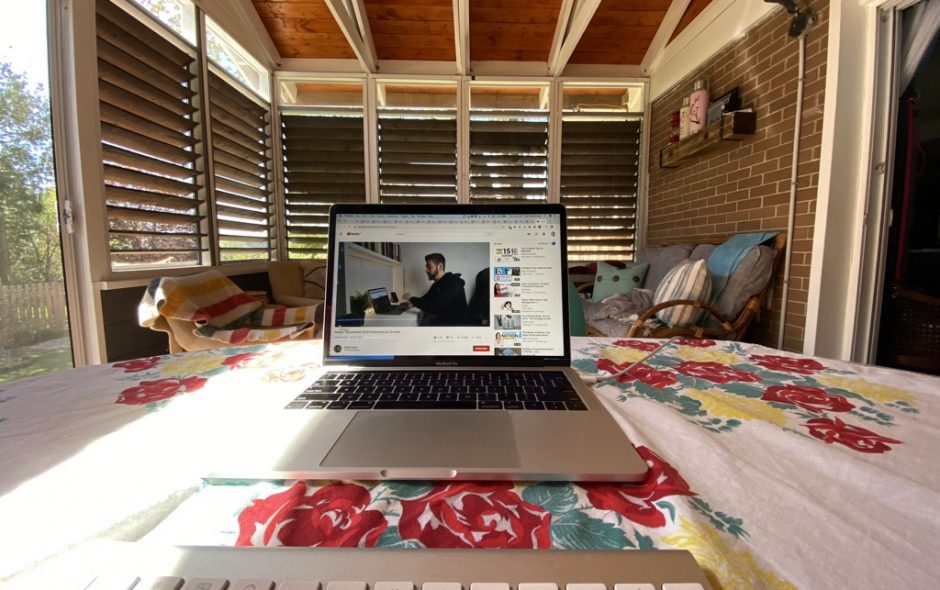After most dinners, my kids ask for the natural nightcap to a great meal — dessert. We go through a back and forth that usually sounds like this:
Me: “How many steps have you taken? You know the rule, if you don’t hit your step goal there is no dessert.”
Them: “Uh”
My wife: “Go run around the yard 10 times and you can have dessert.”
So off they run, gleeful that a small amount of running will get them a fine bowl of ice cream. This is, quite frankly, the ONLY time that running in circles will get you anything.
There is such an important distinction between movement and action but it sometimes gets lost in the motion. We are often “too busy” to take a minute to understand if what we are doing is movement for the sake of it or action with purpose.
We all have a finite amount of time to work on something. That thing could take an hour, a year or a lifetime of effort to accomplish. Eventually time runs out, the opportunity has passed or you get where you were aiming. I think of that as a mission. When it is darkest and you are in it the deepest it is very easy to get lost and start heading in the wrong direction. This happens to us all. No matter how you describe it — losing the forest from the trees, losing your path, whatever analogy you use, we’ve all been there. It is at this moment that knowing your mission or ideal outcome, writing it down and putting it somewhere visible makes all the difference. When I get lost or confused about the thing I’m working on and why, I read that mission or goal and If they line up I keep going. If they don’t line up, I stop.
This is how I check myself to make sure I am not just in motion but I’m actually moving towards my goal. Movement vs action.
There are so many easy distractions that pull us away from what we should be focused on. Most of these are on other people’s schedule. If you don’t control your time you aren’t able to control the action that comes from it.
Some practical things to think about as you walk through your day on the job:
Meetings
We all hate meetings. We do. Sometimes there are meetings that move the earth but those can be counted on one hand in an entire career. I can’t remember my last good meeting, let alone great one. Can you?
Right.
Meetings are mostly movement. Think before you request one. How else can you stop the cycle of meetings for meetings’ sake and turn it into something that creates action. My default is to not have the meeting. Can it be summarized into an email or document and distributed to the members and let them take 10 minutes to read it and get back to you with thoughts instead of using an hour to read it to them in a meeting. If the purpose is to get consensus, ask for it in another form and move on.
If you MUST have a meeting, be clear on the agenda and the goals of the meeting. Distribute information prior to the meeting so everyone comes in versed and ready to ask questions — to move things along. It’s ok to impose on attendees to do some reading before the meeting. This will also force you to make sure ONLY the right people are in the meeting so you don’t waste others time. Meetings are a crucial skill and can be effective to take action but that isn’t the truth today. Do your part. A quick rule of thumb: If there is no agenda, don’t attend/schedule. Period.
Email and messages
Nothing is worse than message overload and that is what we all suffer from. Mainly because they are misused. Most of us use email and a messaging service like Slack or Teams. Email has been around for a generation and yet we are still learning how it fits into business it seems. Slack and Teams are newer but abused nonetheless.
Here is how I use them consistently. Food for thought and you should discuss with your team how you see it working internally.
Email
I think of email as the company archive. We all get way too much because it is way too easy to send. I love email though because I can get a full thought out and send to my colleagues and they can answer it on their own time. This is powerful. When I send an email I don’t need an immediate response. I expect thought and, if needed, a reply at some point. Email for me is movement. If I’m cc’d on anything it means it is something I need to know but a response is not necessary. Those are the best emails.
Messaging Services
Slack and Teams are where the action happens. I mostly use Slack in my work and I think of it as if it was a telephone. When there is a near immediate response needed — if I have a question or a request for example — I send a Slack. Slack is a message wrapped in a form of urgency. Again, I don’t expect an immediate response however I do assume that a Slack message to be of higher priority than an email. Slack messages are action-oriented, short requests. No long drawn out paragraphs here.
A word about SMS.
I use SMS as the ultimate action request. In work terms, this is something that I need a response to immediately. Full stop. If I send a work colleague an SMS it is at the highest priority and help is needed right away. I don’t use it often so it isn’t abused but SMS is the ultimate tool of action for me.
As an organization that uses these tools there needs to be some structure on how to use them effectively in order to not overwhelm your team. It is the responsibility of the company to enable everyone by implementing the right tools for the right reasons.
If all else fails I guess you can ask yourself one important final question: Are you simply mimicking the action of my kids running around the yard for a quick sugar high?
Photo by Patrick Fore on Unsplash






